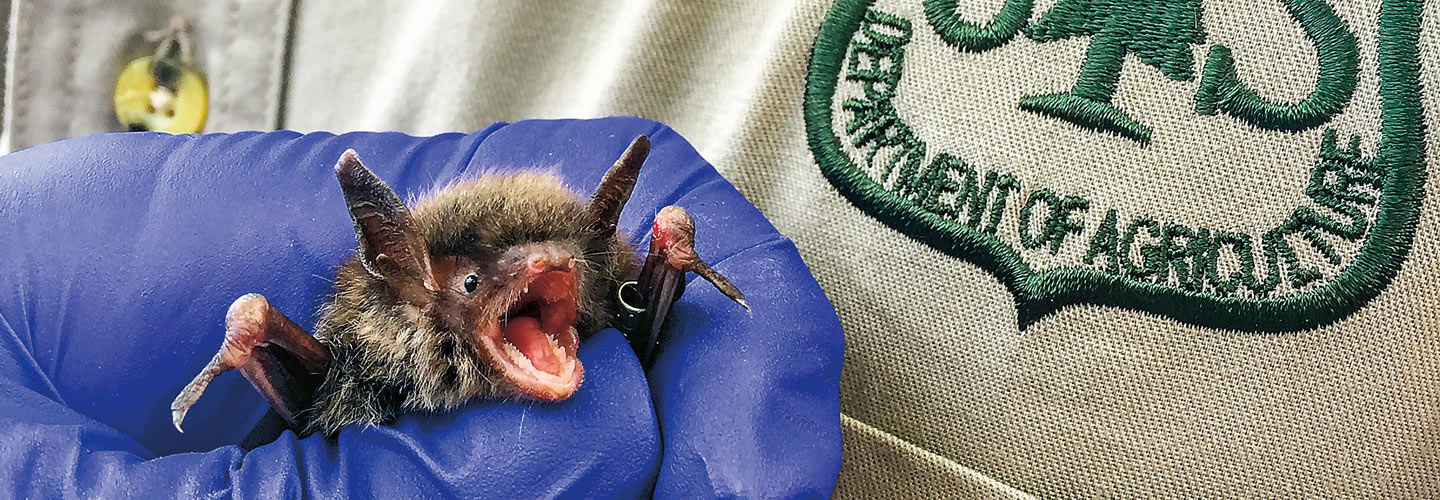Ten years ago, scientists set out to study a bat colony in a cave in New York State. Inside they found a grisly scene. Thousands of dead bats were on the ground. They had fuzzy white spots on their wings, ears, and noses.
The scientists tested the fuzzy growth and learned it was a type of fungus. It spreads over bats’ skin while they roost for the winter. When bats scratch the itchy spots, they waste energy they need to stay alive. The fungus also damages bats’ wings, leaving them unable to hunt for food. They can starve as a result.
The disease, called white-nose syndrome, has killed millions of bats across North America. But last year, biologist Chris Cornelison reported some hopeful news. He and a team of scientists at Georgia State University treated dozens of bats for the disease and released them into the wild. The treatment came from a surprising source: research on how to keep fruit fresh.
Scientists set out to study a bat colony 10 years ago. The bats lived in a cave in New York State. The scientists found a shocking scene inside. Thousands of dead bats covered the ground. They had fuzzy white spots on their wings, ears, and noses.
The scientists tested the fuzz. They learned that it was a type of fungus, like mold. It spreads over bats’ skin while they sleep during winter. Bats scratch the itchy spots. That wastes energy they need to survive the cold. The fungus also damages bats’ wings. They can’t fly to hunt for food. The bats can starve as a result.
The disease is called white-nose syndrome. It has killed millions of bats across North America. But biologist Chris Cornelison has some good news. He works at Georgia State University. He and other scientists treated dozens of sick bats. And they recovered!
The treatment came from a surprising source. Cornelison had been trying to fight fungus that grows on fruit. But the research could help bats too.

